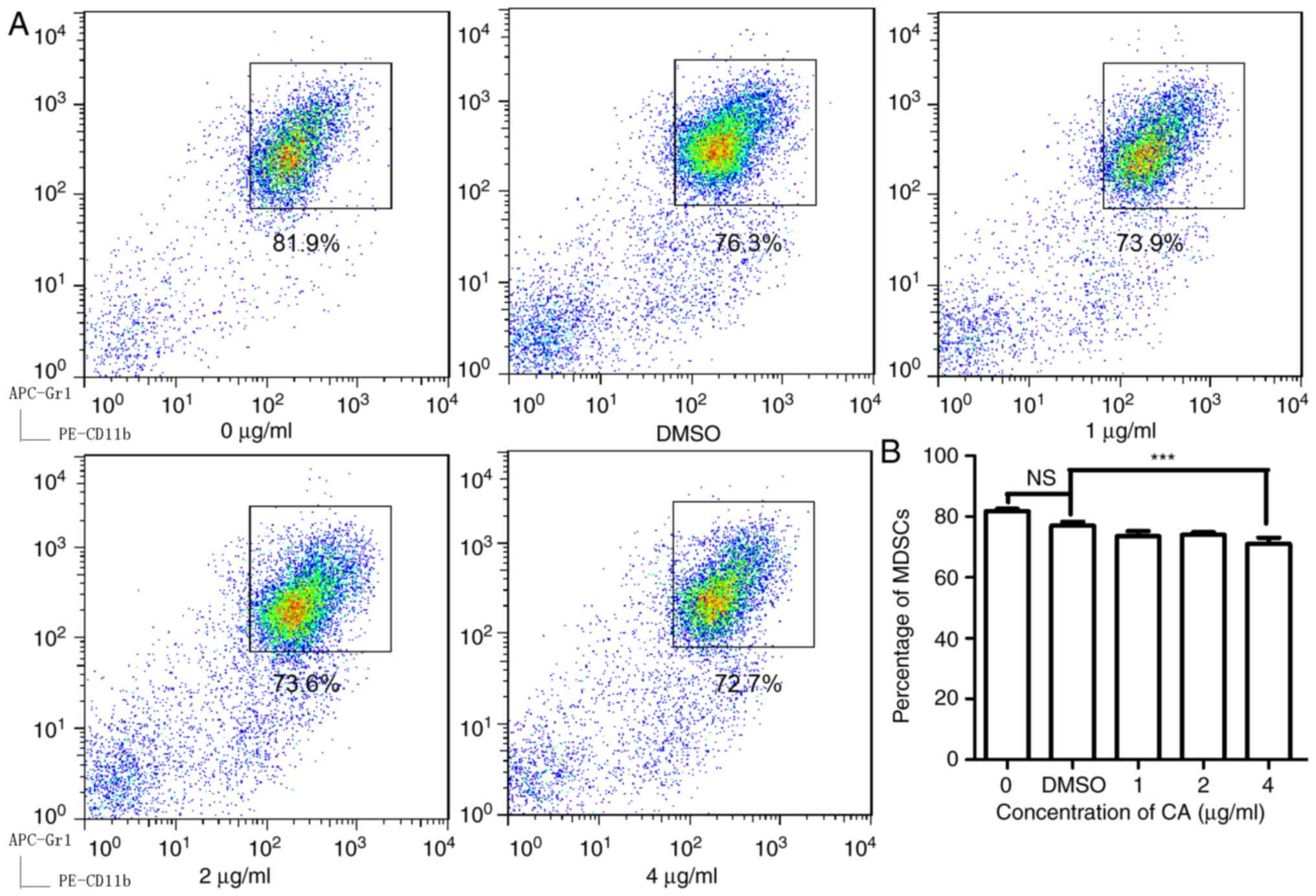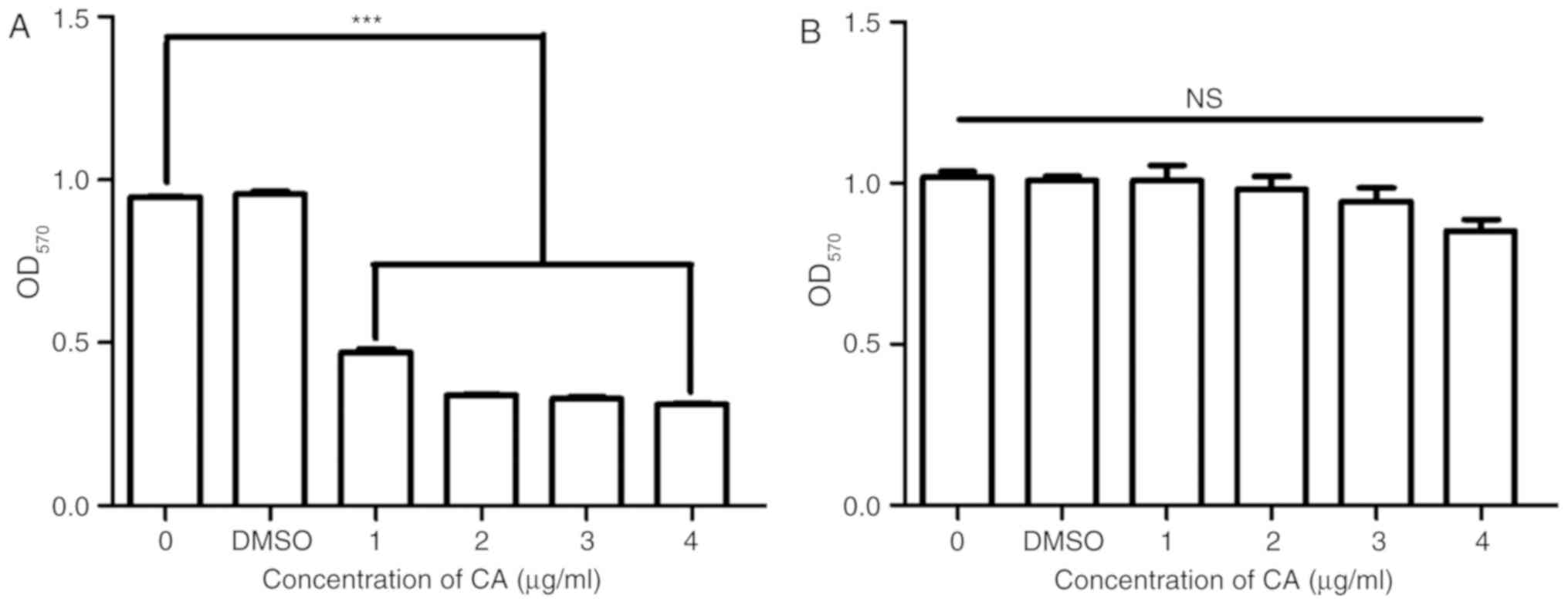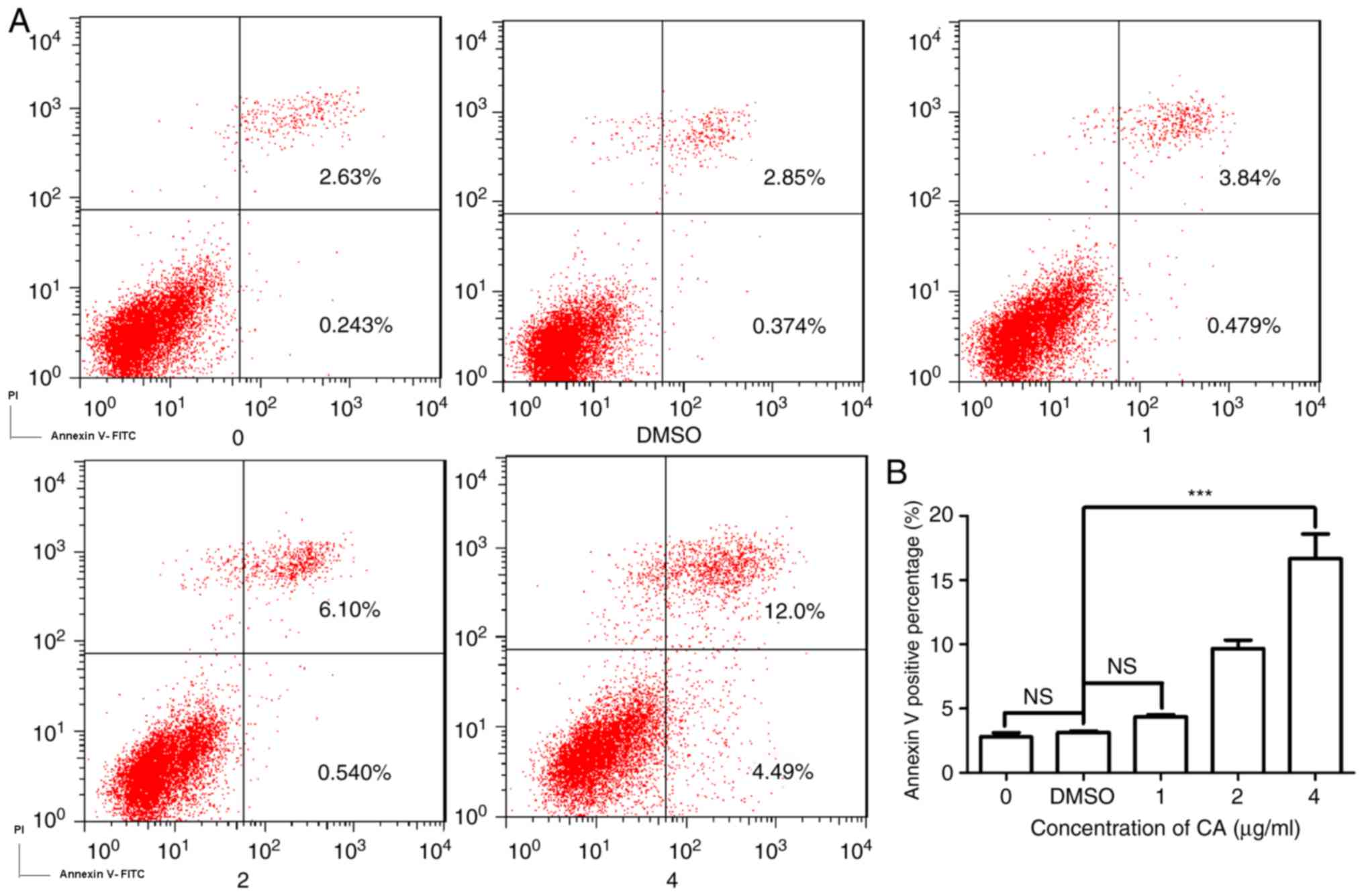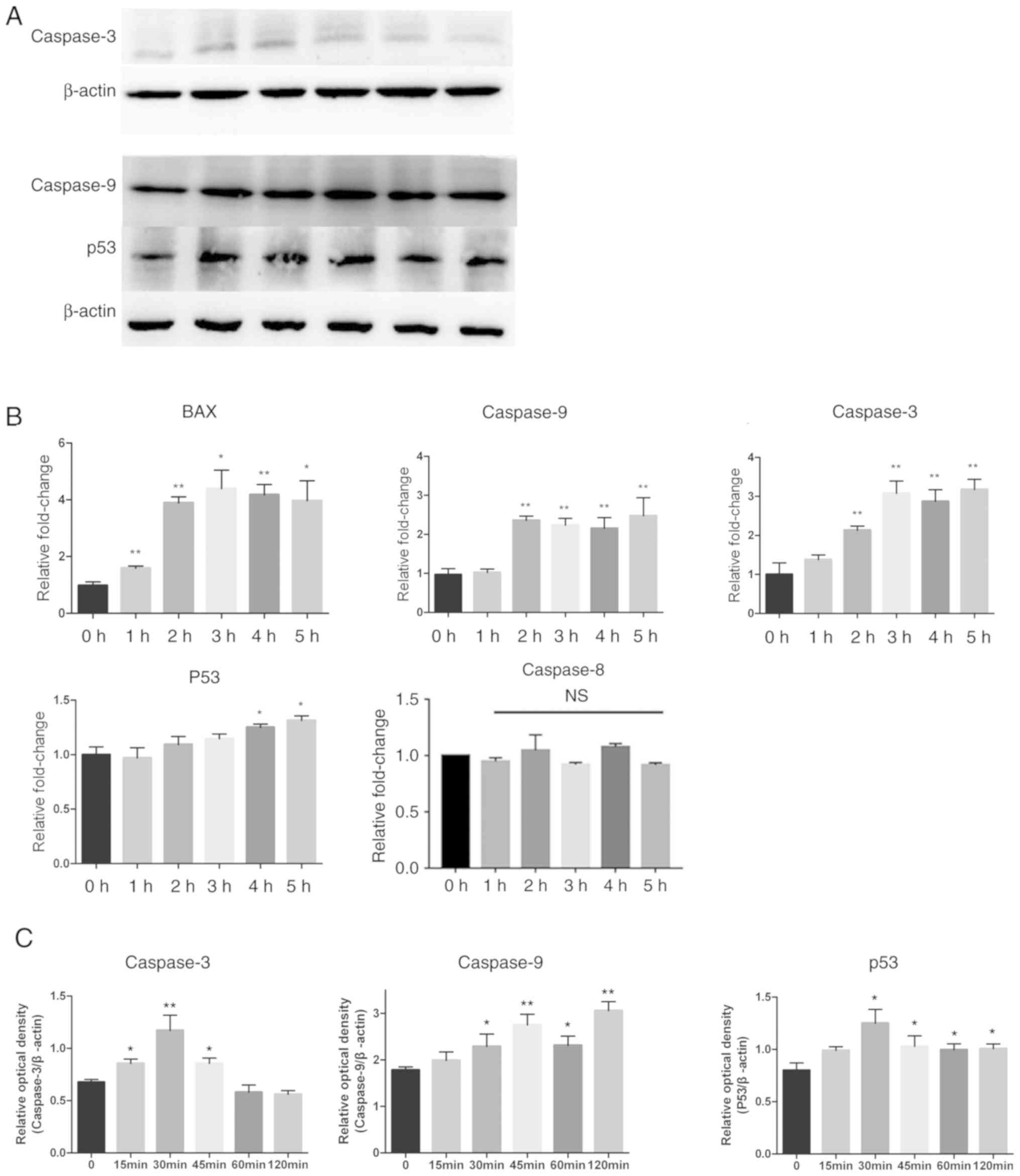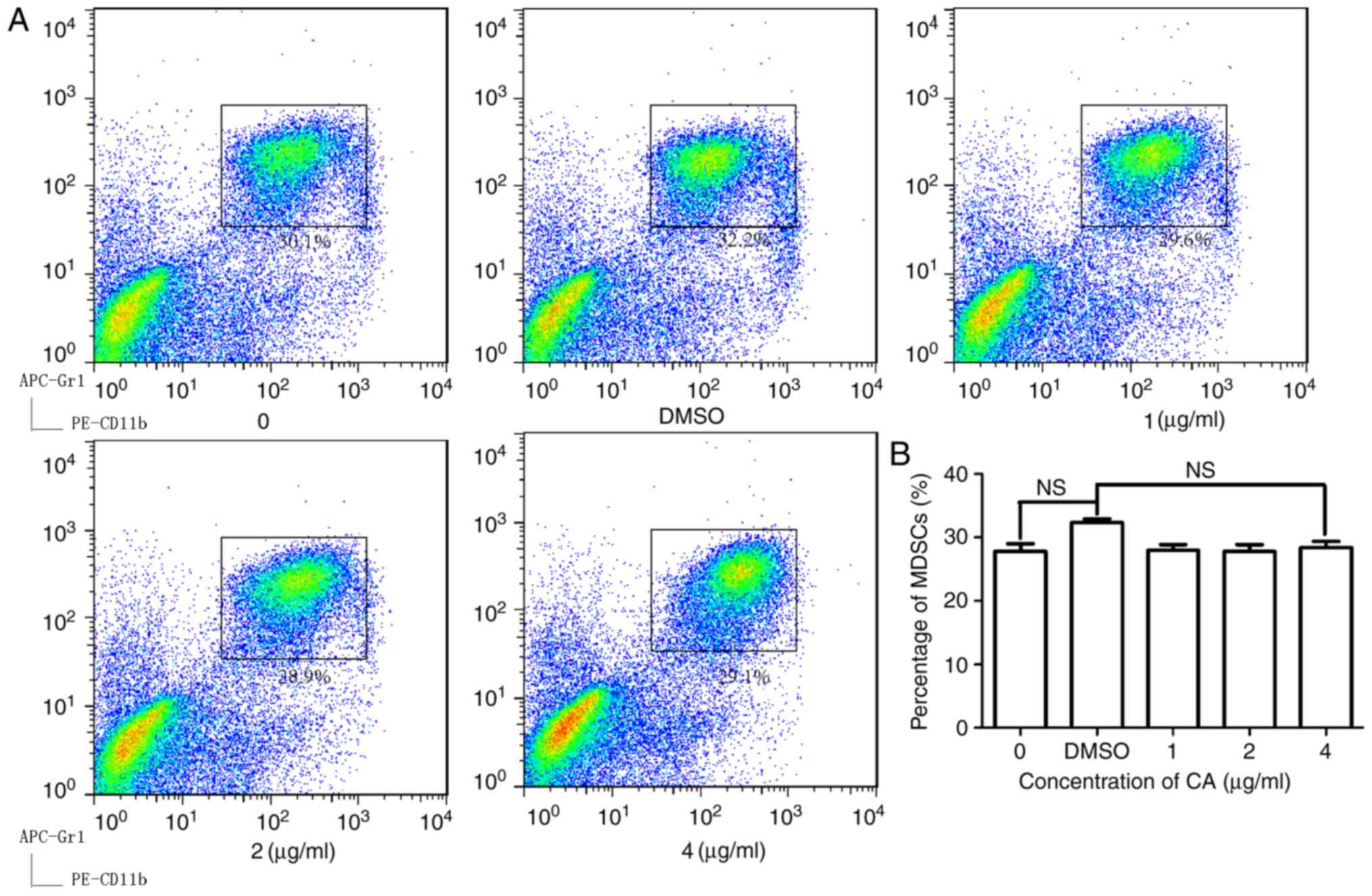|
1
|
Gabrilovich DI and Nagaraj S:
Myeloid-derived suppressor cells as regulators of the immune
system. Nat Rev Immunol. 9:162–174. 2009. View Article : Google Scholar : PubMed/NCBI
|
|
2
|
Bingisser RM, Tilbrook PA, Holt PG and
Kees UR: Macrophage-derived nitric oxide regulates T cell
activation via reversible disruption of the Jak3/STAT5 signaling
pathway. J Immunol. 160:5729–5734. 1998.PubMed/NCBI
|
|
3
|
Harari O and Liao JK: Inhibition of MHC II
gene transcription by nitric oxide and antioxidants. Curr Pharm
Des. 10:893–898. 2004. View Article : Google Scholar : PubMed/NCBI
|
|
4
|
Rivoltini L, Carrabba M, Huber V, Castelli
C, Novellino L, Dalerba P, Mortarini R, Arancia G, Anichini A, Fais
S and Parmiani G: Immunity to cancer: Attack and escape in T
lymphocyte-tumor cell interaction. Immunol Rev. 188:97–113. 2002.
View Article : Google Scholar : PubMed/NCBI
|
|
5
|
Baniyash M: Myeloid-derived suppressor
cells as intruders and targets: Clinical implications in cancer
therapy. Cancer Immunol Immunother. 65:857–867. 2016. View Article : Google Scholar : PubMed/NCBI
|
|
6
|
Long AH, Highfill SL, Cui Y, Smith JP,
Walker AJ, Ramakrishna S, El-Etriby R, Galli S, Tsokos MG, Orentas
RJ and Mackall CL: Reduction of MDSCs with all-trans
retinoic acid improves CAR therapy efficacy for sarcomas. Cancer
Immunol Res. 4:869–880. 2016. View Article : Google Scholar : PubMed/NCBI
|
|
7
|
Waldron TJ, Quatromoni JG, Karakasheva TA,
Singhal S and Rustgi AK: Myeloid derived suppressor cells: Targets
for therapy. Oncoimmunology. 2:e241172013. View Article : Google Scholar : PubMed/NCBI
|
|
8
|
Tsai KD, Liu YH, Chen TW, Yang SM, Wong
HY, Cherng J, Chou KS and Cherng JM: Cuminaldehyde from
Cinnamomum verum induces cell death through targeting
topoisomerase 1 and 2 in human colorectal adenocarcinoma COLO 205
cells. Nutrients. 8(pii): E3182016. View Article : Google Scholar : PubMed/NCBI
|
|
9
|
Matan N, Rimkeeree H, Mawson AJ,
Chompreeda P, Haruthaithanasan V and Parker M: Antimicrobial
activity of cinnamon and clove oils under modified atmosphere
conditions. Int J Food Microbiol. 107:180–185. 2006. View Article : Google Scholar : PubMed/NCBI
|
|
10
|
Kim DH, Kim CH, Kim MS, Kim JY, Jung KJ,
Chung JH, An WG, Lee JW, Yu BP and Chung HY: Suppression of
age-related inflammatory NF-kappaB activation by cinnamaldehyde.
Biogerontology. 8:545–554. 2007. View Article : Google Scholar : PubMed/NCBI
|
|
11
|
Singh G, Maurya S, DeLampasona MP and
Catalan CA: A comparison of chemical, antioxidant and antimicrobial
studies of cinnamon leaf and bark volatile oils, oleoresins and
their constituents. Food Chem Toxicol. 45:1650–1661. 2007.
View Article : Google Scholar : PubMed/NCBI
|
|
12
|
Koppikar SJ, Choudhari AS, Suryavanshi SA,
Kumari S, Chattopadhyay S and Kaul-Ghanekar R: Aqueous cinnamon
extract (ACE-c) from the bark of Cinnamomum cassia causes
apoptosis in human cervical cancer cell line (SiHa) through loss of
mitochondrial membrane potential. BMC Cancer. 10:2102010.
View Article : Google Scholar : PubMed/NCBI
|
|
13
|
Wong HY, Tsai KD, Liu YH, Yang SM, Chen
TW, Cherng J, Chou KS, Chang CM, Yao BT and Cherng JM:
Cinnamomum verum component 2-methoxycinnamaldehyde: A novel
anticancer agent with both anti-topoisomerase I and II activities
in human lung adenocarcinoma A549 cells in vitro and in vivo.
Phytother Res. 30:331–340. 2016. View
Article : Google Scholar : PubMed/NCBI
|
|
14
|
Kwon HK, Hwang JS, So JS, Lee CG, Sahoo A,
Ryu JH, Jeon WK, Ko BS, Im CR, Lee SH, et al: Cinnamon extract
induces tumor cell death through inhibition of NFkappaB and AP1.
BMC Cancer. 10:3922010. View Article : Google Scholar : PubMed/NCBI
|
|
15
|
Livak KJ and Schmittgen TD: Analysis of
relative gene expression data using real-time quantitative PCR and
the 2(-Delta Delta C(T)) method. Methods. 25:402–408. 2001.
View Article : Google Scholar : PubMed/NCBI
|
|
16
|
Nagata S and Tanaka M: Programmed cell
death and the immune system. Nat Rev Immunol. 17:333–340. 2017.
View Article : Google Scholar : PubMed/NCBI
|
|
17
|
Elmore S: Apoptosis: A review of
programmed cell death. Toxicol Pathol. 35:495–516. 2007. View Article : Google Scholar : PubMed/NCBI
|
|
18
|
Wang CY, Bai XY and Wang CH: Traditional
Chinese medicine: A treasured natural resource of anticancer drug
research and development. Am J Chin Med. 42:543–559. 2014.
View Article : Google Scholar : PubMed/NCBI
|
|
19
|
Kwon HK, Jeon WK, Hwang JS, Lee CG, So JS,
Park JA, Ko BS and Im SH: Cinnamon extract suppresses tumor
progression by modulating angiogenesis and the effector function of
CD8+ T cells. Cancer Lett. 278:174–182. 2009. View Article : Google Scholar : PubMed/NCBI
|
|
20
|
Hong SH, Ismail IA, Kang SM, Han DC and
Kwon BM: Cinnamaldehydes in cancer chemotherapy. Phytother Res.
30:754–767. 2016. View
Article : Google Scholar : PubMed/NCBI
|
|
21
|
Veglia F, Perego M and Gabrilovich D:
Myeloid-derived suppressor cells coming of age. Nat Immunol.
19:108–119. 2018. View Article : Google Scholar : PubMed/NCBI
|
|
22
|
Youn JI, Nagaraj S, Collazo M and
Gabrilovich DI: Subsets of myeloid-derived suppressor cells in
tumor-bearing mice. J Immunol. 181:5791–5802. 2008. View Article : Google Scholar : PubMed/NCBI
|
|
23
|
Wu MH, Jin XK, Yu AQ, Zhu YT, Li D, Li WW
and Wang Q: Caspase-mediated apoptosis in crustaceans: Cloning and
functional characterization of EsCaspase-3-like protein from
Eriocheir. Fish Shellfish Immunol. 41:625–632. 2014. View Article : Google Scholar : PubMed/NCBI
|
|
24
|
Kumar S: Caspase function in programmed
cell death. Cell Death Differ. 14:32–43. 2007. View Article : Google Scholar : PubMed/NCBI
|
|
25
|
Galluzzi L, Vitale I, Abrams JM, Alnemri
ES, Baehrecke EH, Blagosklonny MV, Dawson TM, Dawson VL, El-Deiry
WS, Fulda S, et al: Molecular definitions of cell death
subroutines: Recommendations of the nomenclature committee on cell
death 2012. Cell Death Differ. 19:107–120. 2012. View Article : Google Scholar : PubMed/NCBI
|



